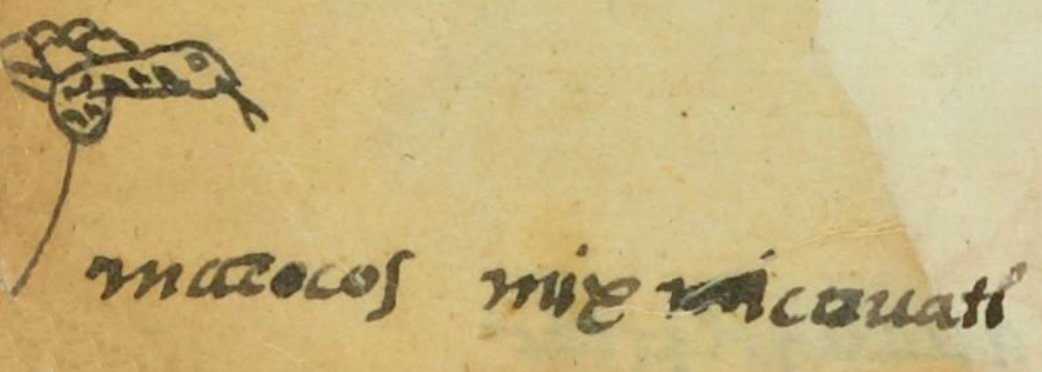Mixcoatl (MH483v)
This compound glyph drawn with black lines represents the personal name Mixcoatl ("Cloud Serpent," attested here as a man's name). It shows a cluster of clouds (mixtli) on the left side and an upright serpent (coatl) on the right. The serpent is shown in profile, with its head looking to the viewer's right and its forked tongue protruding. Its spotted body is partly curled, and its tail (without rattles) points to the left.
Stephanie Wood
Cloud Serpent was a popular name for Nahua men, especially notable in the Matrícula de Huexotzinco. According to Sahagún, it was a divine force among the Chichimecs, and carried a powerful significance for the Nahuas. Some scholars have seen it as a divinity associated with hunting, others as part of a Tlaloc complex (of clouds, rain, lightning, etc.), and others as a symbol for a whirlwind (remolino).
Stephanie Wood
mixcouatl
Mixcoatl
Stephanie Wood
1560
Xitlali Torres and Stephanie Wood
serpents, serpientes, clouds, nubes, cohuatl, nombres de hombres, crótalos

Mixcoatl, a deity, https://nahuatl.wired-humanities.org/content/mixcoatl
mix(tli), cloud(s), https://nahuatl.wired-humanities.org/content/mixtli
coa(tl), serpent/snake, https://nahuatl.wired-humanities.org/content/coatl
Serpiente de la Nubes
Stephanie Wood
Matrícula de Huexotzinco, folio 483v, World Digital Library. https://www.loc.gov/resource/gdcwdl.wdl_15282/?sp=46&st=image.
This manuscript is hosted by the Library of Congress and the World Digital Library; used here with the Creative Commons, “Attribution-NonCommercial-ShareAlike 3.0 License” (CC-BY-NC-SAq 3.0).






